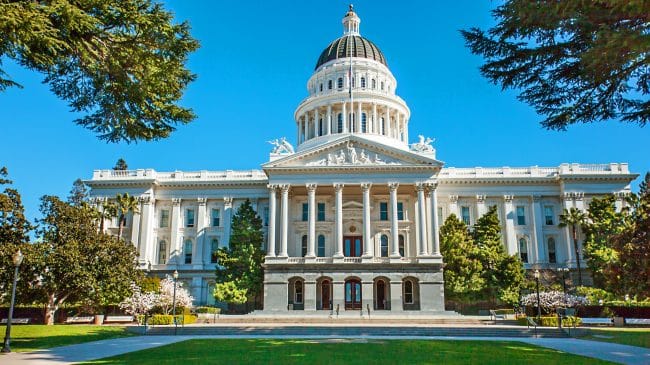The first rule for getting out of a hole is to stop digging. But this fall, California voters are being asked to approve four statewide bond measures that would put the state and taxpayers $16 billion deeper into a fiscal hole.
Californians share responsibility for the US federal debt, which is growing at a rate of $1 trillion per year. The widely-reported national debt, which recently surpassed $21 trillion, includes only a portion of federal obligations. Unfunded obligations are a growing problem at all levels of government. When unfunded federal employee retirement obligations, Social Security, Medicare, and other long-term costs are added in, the total federal debt burden is closer to $79 trillion — four times the nation’s Gross Domestic Product (GDP).
Similarly, here in California, state and local governments have extensive unfunded pension and retiree health obligations, plus substantial bonded debt. My review of financial disclosures for the 2015 fiscal year revealed $1.3 trillion of obligations across the state — equal to more than 50 percent of economic output.
While the $16 billion worth of bonds on the statewide ballot this November may look like a mere rounding error next to some of these other massive debt numbers, rejecting the initiatives would give California’s voters a chance signal a desire to stop burdening our children and grandchildren with our unpaid bills.
In thinking about what the state wants to borrow money for, it is useful to revisit the promises made by proponents of previous state bond measures. The high-speed rail bond was supposed to match $10 billion of debt with federal and private funds to build a bullet train that would whisk travelers from Los Angeles to San Francisco by 2020. The cost of the project has skyrocketed, no private funds have materialized, and the completion date has been pushed back to at least 2033.
The $3 billion stem cell bond passed in 2004 created the California Institute for Regenerative Medicine, which has yet to produce a single federally-approved therapy. Nor has it produced the large volume of royalty income proponents predicted. Given disappointments like those, voters should take a skeptical view of the potential benefits of this season’s crop of state bond measures.
Proposition 1’s affordable housing wouldn’t put much of a dent in the state’s homeless problem. Nor will Proposition 2, which would allow the state to securitize income tax revenues to build supportive housing for the mentally ill. In 2004, voters approved a one percent surtax on incomes over $1 million to fund mental health services. Prop. 2 would divert some of this mental health funding into debt service for new housing bonds. When the next recession arrives and the millionaire tax revenues decrease, the bond payments could force cuts to mental health services or oblige the state to dip into its general fund.
Proposition 3 is supposedly a water bond measure, but none of the $8.9 billion of Prop. 3 money would fund new dams or desalination – the two best solutions to California’s water supply problem. Much of the proceeds would be spent on wetland habitats, which is why duck hunting interests are donating to the campaign. Further, Californians already approved a water bond in June, as well as three others between 2006 and 2014. Much of the debt from these measures has yet to be issued. Voters should wait to see how the previously approved bonds are utilized before authorizing more.
Finally, Proposition 4 would finance new projects at children’s hospitals. While it may be hard for voters to say no to children and hospitals, they should wonder whether these institutions need further taxpayer subsidies. The children’s hospitals that would benefit from these bonds reported combined net income of $276 million in recent filings and combined net assets of $4.6 billion, which suggests the hospitals could afford to finance expansions without asking state voters for an extra $1.5 billion in bond funding.
Proponents of all four of this year’s state bonds have compelling stories for voters — affordable housing, water supply, and children’s hospitals. But, sooner or later, voters and political leaders have to grapple with, and stop adding to, the high levels of federal, state and local debt we are already imposing on future generations.
This column originally ran in The Orange County Register.

